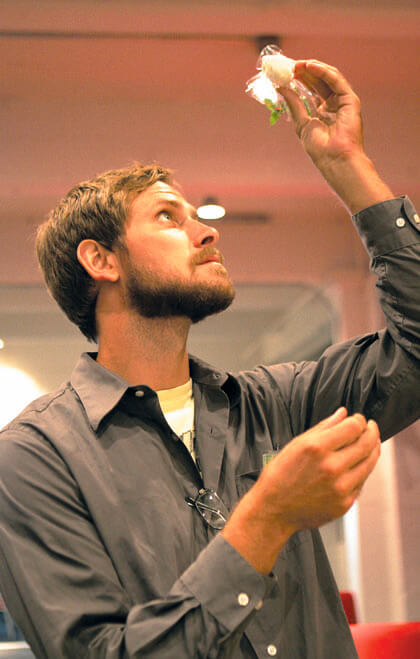By Gene Roman
The New York Designs Business Center at LaGuardia Community College in Long Island City is promoting green design to reduce or eliminate the negative impact of buildings on the environment and its occupants.
On Sept. 17, some 80 professionals representing different sectors of the design industry, gathered at LaGuardia for the first NY Designs Green Forum. The design professionals sought to encourage graphic designers, architects, printers and marketing directors to consider the use of environmentally sustainable products in all aspects of their work.
“We want people to have a better understanding of how they can apply green principles to their design work and promote environmental sustainability,” said Jane Tabachnick, director of the Designs Business Center.
There is increasing pressure from the marketplace to go green, said Aaris Sherin, assistant professor of graphic design at St. John’s University and the author of “SustainABLE,” a guide to materials and applications for graphic designers and their clients.
“Market forces have taken over for the environmental advocates and organizations in promoting green products and procedures,” she added. “The environmental advocacy groups that were on the margins decades ago are now speaking to corporations and businesses.”
Two Queens companies are demonstrating the benefits of environmental sustainability in the private sector.
DFB Sales of Long Island City recently introduced a new solar shade fabric. A full 90 percent of the fabrics in the collection are PVC free, said Marissa Gawloski, director of business development.
PVC, or polyvinyl chloride, emits an odor detrimental to the health of individuals and the environment.
Printing Responsibility operates a production facility in Long Island City, which makes business cards, envelopes, postcards and pocket folders.
The company gives its customers a “green guarantee” that ensures that work is produced using only vegetable−based inks and in a facility certified by both the Forest Stewardship Council and Sustainable Forestry Initiative.
Both companies ensure that forestry and the purchase of wood and paper are practiced in environmentally responsible ways, according to their Web sites.
In her keynote address, Tensie Whelan, president of the Rainforest Alliance of New York, which works to conserve biodiversity, challenged the audience to consider the environmental, social and economic impact of their work.
“When we design for sustainability, we need to design for the people who are effected by a product — that is, the social side,” she said. “We need to design for the environment, considering the impact on wildlife, forests and the air. Then we need to design for the economic side — can people buy and sell the product sustainably?”
Sherin cautioned against seeing every company speaking out in favor of environmental sustainability as genuine.
“Not every company integrating ‘green’ principles into their operations is legitimate,” she said. “Companies should have data, targeted goals for the future and a commitment to organizational transparency to support their claims that they are integrating sustainability concerns into their daily operations.”
Transparency allows the public to review what you are doing and hold you accountable, she added.
































